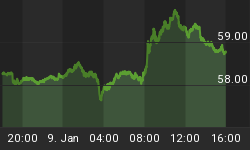Banking is a notoriously slow-moving industry, and even in this technology age things have tended to remain more or less the same with no radical shift in the products and services offered by financial institutions. Yet, in many parts of the world, fintechs continue to drive major innovation in the banking industry--usually by sharpening their focus on customer experience.
Fintechs tend to thrive in regions with large unbanked populations such as China. For instance in China, Alipay, mobile banking services provider and subsidiary of Alibaba’s Ant Financial, has grown so big that last year it handled more than $8 trillion in transactions--more than MasterCard’s and twice Germany’s GDP. The app has also become a major player in the lucrative money market fund (MMF) business and now commands a bigger share than the country’s leading banks.
Alipay is such a disruptive force in China that state TV has labeled it “a vampire sucking blood from banks”, while the government has enacted new banking rules to try and clip its wings.
Banking Disruption in the Developed World
While Alipay’s success is simply unprecedented, banking disruption is now happening even in the developed economies of the world. Related: Are Yield Curve Fears Justified?
In the UK, relaxation of rules around banking licensing has seen a flurry of challenger banks spring up, mostly targeting retail banking. These 'neobanks' are mostly app-only banks--branchless, digital propositions that offer banking services at far lower costs than your typical bank. Many boast slick apps, allow freezing and unfreezing of cards at the touch of a button and can analyze customer spending in real-time and send budgeting nudges.
The banks are run solely through a smartphone or tablet with no physical branches. Partner firms plug into the apps thus creating a marketplace of services that range from investments and loans to energy and insurance.
And they are thriving, too. Founded five years ago, Britain’s Revolut has amassed nearly two million customers and was recently valued at $1.7 billion during its third round of funding thus making it the first ever digital-only bank to attain unicorn status. That's nearly half as many accounts as those held by the country's much bigger TSB Bank Plc.
In the U.S., there’s a dearth of fully-fledged banking startups like Revolut. Only payment apps such as Apple Pay, Amazon Pay, PayPal and Square can be said to offer services that threaten to disintermediate banks from valuable consumer spending transactions that are their lifeblood.
Research by Leading Edge Forum (LEF) comparing 10 major U.S. sectors ranked the banking industry as one of the sectors that have been relatively unchanged by digital disruption, with only insurance and manufacturing ranking lower.
Disruption Coming To U.S. Banking
There’s a good reason why U.S. banks have so far been mostly immune to disruption. Following the 2008 market crash, governments across the globe increased banking regulation to prevent further shocks to the system.
But years later, many are realizing that excessive regulation has been stifling innovation and growth and have begun easing them. The UK is one such country.
Related: Gold Shorts Are Reaching Record Levels
Here in the U.S., banking regulation has not changed much in the post-crisis period. This year, however, something significant happened when president Trump assented to a new set of legislation that eased oversight on the industry and rolled back the crippling Dodd-Frank regulations. Essentially, the new law lessened rules on a large number of U.S. banks with assets below $250 billion.
With the shackles off, it’s very likely that banks themselves will be their own biggest disruptor. They have a number of choices: replicate what fintechs have been doing by coming up with equally innovative solutions or becoming more symbiotic and less competitive with fintechs i.e. forging partnerships or a mix of these strategies.
After all, a 2017 World Retail Banking Report revealed that fintechs such as Revolut in general provide higher customer satisfaction than traditional banks. Banks can disaggregate the impact by fintechs by pursuing strategies such as open APIs and open banking
Incumbents are likely to maintain market leadership due to relatively high barriers to entry and natural inertia by customers to switch. But that does not in any way mean that things will never change.
By Alex Kimani for Safehaven.com
More Top Reads From Safehaven.com
















